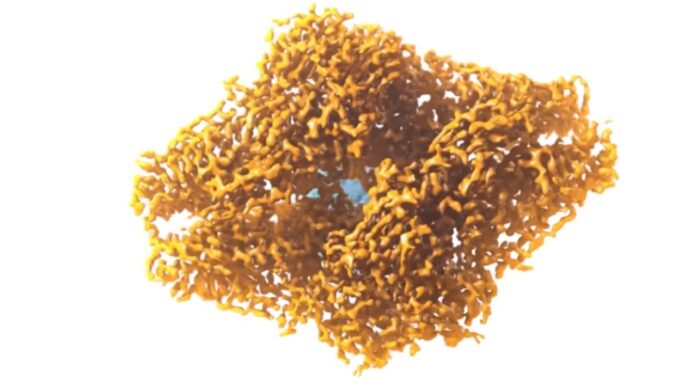An ingenious new cryo-electron microscopy (cryo-EM) microscope prototype developed by UK scientists could revolutionize protein imaging by slashing prohibitive equipment costs, preventing widespread adoption.
Offering drastic affordability improvements through clever optimization, the prototype may soon reach commercialization for under $500,000—nearly 10 times cheaper than existing high-end models.
In recent years, cryo-EM has emerged as a transformational technology within structural biology by flash-freezing protein samples for electron bombardment, yielding intricately detailed molecular models. This approach circumvents the limitations of traditional X-ray crystallography methods.
Cryo-EM also captures proteins in multiple configurations, plus previously stubborn candidates resisting crystallization altogether. It increasingly surpasses legacy techniques for solving novel structures, garnering skyrocketing interest. Experts forecast its analyses outpacing X-ray approaches in 2023.
Despite tremendous promise, cryo-EM adoption faces a gigantic hurdle: multi-million-dollar microscope price tags restrict access for many academics and even entire regions while concentrating capabilities only among elite labs.
Read More: The Greatest Scientific Feuds
Very few American states possess cryo-EM facilities currently. Cost barriers exacerbate inequality among structural biologists. Improving affordability would profoundly democratize insights into unlocking molecular drug targets against diseases for broader groups otherwise excluded.
A research team at the UK’s Laboratory of Molecular Biology (LMB) developed an ingenious streamlined prototype slashing cryo-EM microscope costs to $500,000 through various optimizations.
Notably, they discovered that much lower electron beam energies around 100 kiloelectronvolts still yielded atomic resolution, rivaling cutting-edge installations costing over $10 million. This innovation tremendously condenses infrastructure necessities.
Read Also: Best Smartwatches for Blood Pressure Monitoring
Additionally, upgraded electron focusing lenses and detection systems boosted efficiencies. Test imaging matched the quality of elite flagships, but within a day rather than weeks.
With astonishing capabilities possible below current costly configurations, researchers anticipate manufacturers rushing this democratized design to true mass deployment around $500,000, facilitating universal cryo-EM accessibility.
Groups traditionally lacking financial means can finally enjoy deconvoluting molecular structures themselves rather than perpetual outsourcing to communal facilities. This point-of-source autonomy promises expedited discovery progress within medicine and biotech.
Even lower-tier institutions and less-funded academics gain equal protein imaging opportunities, uncovering therapeutic insights benefiting humanity against confounding illnesses. No longer an exclusive frontier, cryo-EM turns every day through innovation.
Separately, artificial intelligence-powered protein analysis aids structural deductions from sequence data alone. However, revolutionary cryo-EM keeps essential by capturing intricate shapes directly for validating predictions and tackling unusual formations with sometimes confusing algorithms. AI even shows promise of someday synergizing with imaging to mutually enhance precision.
But for now, ushering cryo-EM towards affordability promises immense research dividends from an in-demand method already proven indispensable for illuminating biological complexes. Soon, uncovering nature’s nanoscale clinical secrets will be more collaborative than ever.
Presently, leading cryo-EM brand Thermo Fisher Scientific sells an intermediate-cost model dubbed Krios Tundra operating at the pivotal 100 KeV energy sweet spot, matching the new prototype’s configuration as companies react by lowering capital barriers bit by bit.
This accessibility direction indeed enabled certain universities to purchase Tundra systems unimaginable previously given historical multi-million dollar cryo-EM price tags. However, the new prototype seemingly surpasses existing compromises on premium capabilities.
By collaborating with manufacturers leapfrogging benchtop cryo-EM towards democratization, researchers optimistically envision protein mappers flourishing everywhere rather than being siloed by bank accounts. Since life’s chemical foundations involve intricately folded molecules, this breakthrough aids in literally envisioning ourselves for the first time at near-atomic resolutions!




![Ranking US States: From Healthiest to Least Healthy [2024 Guide] Health Rankings US States](https://articleify.com/wp-content/uploads/2024/03/Health-Rankings-US-States-218x150.jpg)









![Technical Aspects of 844 Area Code in 2024 [Detail Guide] 844 Area Code](https://articleify.com/wp-content/uploads/2024/01/844-Area-Code-150x150.jpg)














